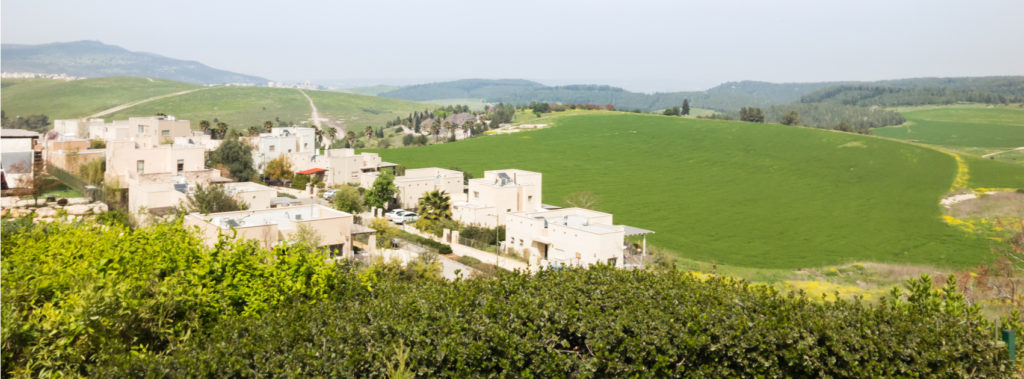If you’ve explored My Olive Tree’s work, likely you’ve come across the word, “kibbutz.” It is from the Hebrew root word kvutza, which means “group.”
Prior to 1948, when Israel reached statehood, kvutza referred to communal living. At one time, kvutza and kibbutz were distinct from each other.
- Kvutza referred to small agricultural communities.
- Kibbutz referred to larger agricultural communities that intended to expand with production.
Today, because the agricultural community has grown in both size and production, kibbutzim (plural) are used to describe both farming districts.
When was the first kibbutz established?
A group of Jewish pioneers from Europe settled in Degania Alef, in northern Israel, in 1909. They came to reclaim their ancient soil and establish a new life—and the first kibbutz.
This new way of life was met with challenges. Scarce water, limited agricultural experience, and the harsh environment made their efforts difficult. However, they overcame the odds, and through their vision and hard work, thriving communities that proved to have a dominant role in Israel’s economy came into existence.
Though there have been changes over the past century in the kibbutz communities, fundamentally they remain the same—a community of agriculturalists.
The early years…
Early on, the kibbutz members shared almost everything. All earnings and assets were managed as one, in efforts to keep economic equality. Most members were farmers who worked the land. Subsidiary roles were also established to facilitate the entire line of harvest and production.
In addition to shared income, they shared in daily living; dining, laundry, child-rearing, education, and social services.
Following statehood in 1948, about 7.5% of Israel’s population lived on kibbutzim. Not only did this play a key role in agricultural economics, but in politics as well. Early kibbutzim were strategically placed around the borders of Israel as added defense.
In fact, My Olive Tree has had the opportunity to take part in border planting efforts, with the same purpose as the early kibbuz, through our Peace Grove sponsorships.
We have successfully planted olive trees over a terror tunnel in southern Israel at Manache Reim—the Israeli Army Base headquarters for the Gaza Strip—as a symbol of peace and protection.
Restoration after recession…
Due to an economic decline in the 1980s and 1990s, many kibbutz farmers left the agricultural communities for work opportunities in the cities. This was a redefining moment in the kibbutz movement.
As a result, many of Israel’s kibbutzim became privatized. Members payed a percentage of their incomes back into the kibbutz, allowing for a profit into their communal treasury. This provides health care and education, among other social services for their members.
This arrangement has helped bring the economy back to life, and has made kibbutz membership more attractive.
Connecting the past with the future…
The pioneers and founders of these remarkable communities longed to reconnect with their homeland. Their desire to restore and revive their land was in their genetic makeup.
Over time, the kibbutz communities made the rocky, arid desert bloom. They have brought stability to the economy and have established a culture of kindness and concern for those around them.
Over a hundred years ago these brave men and women faced an unsettled and barren land, but through much hard work and innovation they’ve set forth a movement that has produced remarkable results.
At My Olive Tree, we personally stand with the diligent kibbutz farmers. By providing trees for them to plant and harvest, year-after-year they are able to continue their dream of a new way of life and a vision of making the desert bloom.
